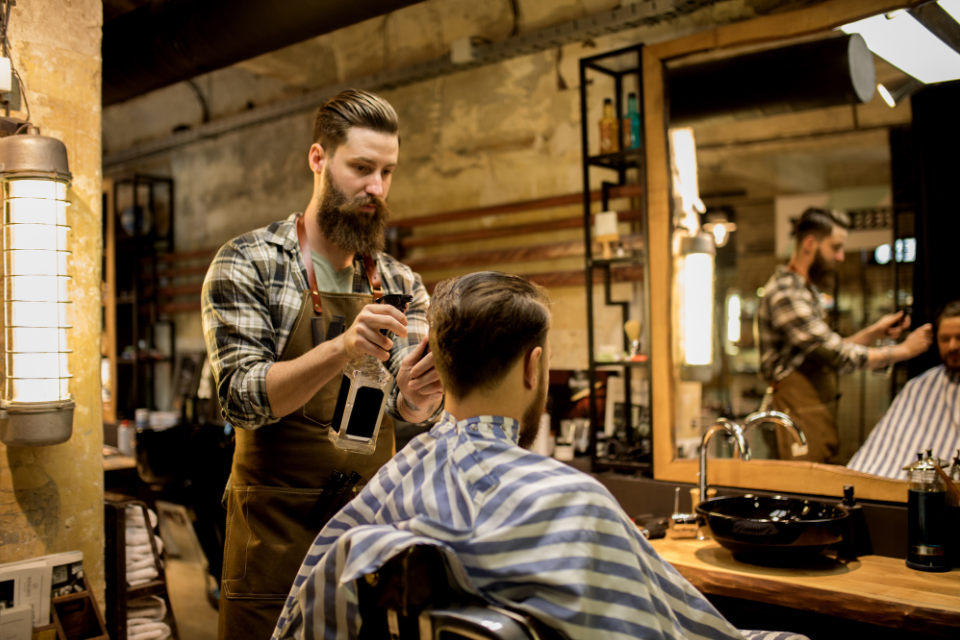When it comes to men’s hairstyles, the burst fade and the mullet are two distinctive cuts that have garnered popularity over the years. Both styles have unique characteristics that set them apart, yet some people still ask, “Is a burst fade a mullet?” This article aims to answer that question by exploring what defines each haircut, discussing their differences and similarities, and providing insights for those considering either style.
What is a Burst Fade?
A burst fade is a modern and trendy haircut that has become popular for its sleek and edgy look. The burst fade gets its name from how it ” bursts ” around the ear, creating a rounded shape. This style typically features short hair on the sides and back, gradually fading into longer hair on top. The burst fade can be paired with various top styles, such as a mohawk, faux hawk, or even longer, curly hair.
Key Characteristics of a Burst Fade
- Faded Sides and Back: The hair on the sides and back is cut in a fade, starting short near the ears and gradually increasing in length as it moves upward and backward.
- Rounded Fade: The fade is rounded around the ear, giving the “burst” effect that defines this style.
- Versatile Top: The hair on top can be styled in numerous ways, making the burst fade a versatile haircut suitable for various hair types and lengths.
What is a Mullet?
The mullet is a classic hairstyle that was particularly popular in the 1980s and has seen a resurgence in recent years. The mullet is characterized by short hair at the front and sides, with significantly longer hair at the back. This distinct contrast between the lengths at the front and back creates the iconic mullet look.
Key Characteristics of a Mullet
- Short Front and Sides: The hair at the front and sides is typically kept short, often similar in length to traditional short haircuts.
- Long Back: The defining feature of the mullet is the long hair at the back, which can vary in length but is always longer than the hair at the front and sides.
- Contrasting Lengths: The stark difference between the short front/sides and the long back is what makes the mullet stand out.
Differences Between Burst Fade and Mullet
1. Fade vs. Length Contrast
The primary difference between a burst fade and a mullet lies in the fade and the length contrast. A burst fade focuses on a gradual fade around the ears and towards the back, while a mullet features a sharp contrast between the short hair at the front and sides and the long hair at the back.
2. Styling Options
A burst fade offers more versatility in terms of styling the top. You can pair it with different hair lengths and textures, making it suitable for a variety of looks, from professional to edgy. In contrast, the mullet’s styling options are more limited due to the long back, although the length at the back can be styled in various ways, such as wavy, curly, or straight.
3. Cultural Associations
The burst fade is often seen as a contemporary, stylish cut that is popular in urban and modern settings. The mullet, on the other hand, has a nostalgic association with the 1980s and is often embraced for its retro appeal.
4. Maintenance

Both hairstyles require maintenance, but the burst fade might require more frequent trips to the barber to keep the fade looking sharp. The mullet, while needing care to keep the long back looking good, does not require as frequent fading.
Similarities Between Burst Fade and Mullet
While burst fades and mullets have distinct differences, they share some similarities:
- Statement Hairstyles: Both haircuts are bold choices that make a statement. They are not your average, everyday cuts and can help the wearer stand out.
- Customization: Both styles can be customized to suit personal preferences. For example, the length and shape of the burst fade can be adjusted, and the length of the mullet’s back can vary.
- Versatility with Top Styles: While the burst fade allows for various top styles, the mullet can also be adapted with different textures and styling products to create unique looks.
Choosing Between a Burst Fade and a Mullet
Deciding between a burst fade and a mullet depends on your personal style, hair type, and the statement you want to make. If you prefer a modern, versatile cut that offers various styling options, a burst fade might be the right choice for you. On the other hand, if you’re looking to embrace a retro, bold look with a stark contrast in hair lengths, a mullet could be the way to go.
For those who are curious about different fade haircuts and how they can be adapted to suit various hair types and lengths, check out our guide to temple fade haircuts.
Conclusion
So, is a burst fade a mullet? The answer is no. While both styles are distinctive and can be customized to suit individual preferences, they are fundamentally different in their structure and overall look. Understanding these differences can help you choose the right style that best fits your personality and aesthetic.
Whether you opt for the edgy burst fade or the nostalgic mullet, both haircuts offer unique ways to express your style and make a statement. By understanding the characteristics and differences between these two popular hairstyles, you can make an informed decision that reflects your personal taste and hair goals. If want to learn more about Unique Temple Fade Variations and Combinations click here.

Olivia Harper is a lifestyle guru with a background in journalism and over 10 years of experience in writing about modern living. She covers a wide range of topics, including travel, fashion, relationships, and personal development. Olivia’s engaging writing style and expert knowledge make her articles a must-read for anyone looking to enhance their lifestyle.




